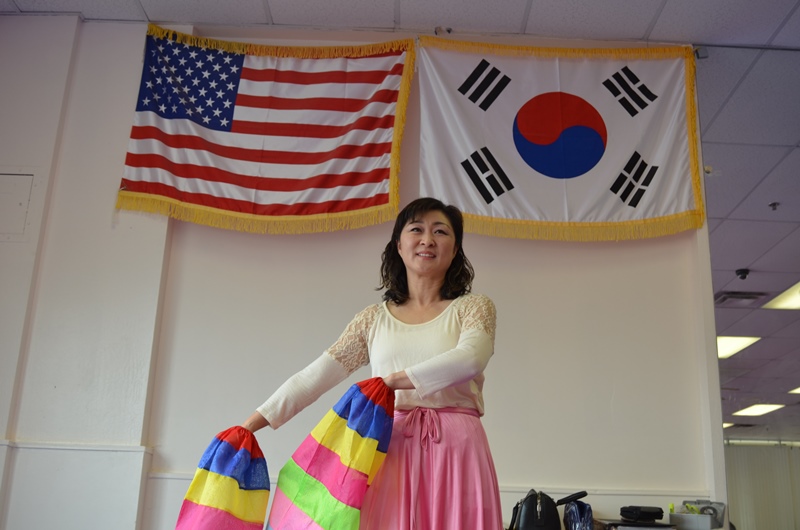
Traditional Korean Dance and Drums: Gateways To Korean Culture
When Misuk Kujawski moved to Phoenix seventeen years ago, she realized there were no Korean cultural classes. She used to teach traditional Korean drum and dance to young students when she lived in South Korea so she decided to use her talents to help the community.
“I thought that my small talent will give some hope to Korean people here because they miss their Korean culture,” said Kujawski.
She started her first class six years ago. To her surprise, a lot of people enjoyed learning so she added more classes. Now she teaches three times a week to students of all ages. One of the classes she teaches is the Korean percussion genre called “samulnori.”
Samulnori (사물놀이) stands for “four things play” and refers to the four Korean instruments. Misuk teaches her students how to play the changgo. Musicians hit one side of the drum’s head with their hands and another end with a stick.
Another class Kujawski teaches is the Korean dance known as Buchaechum. Buchaechum (부채춤) is a traditional dance in which dancers use brightly painted fans to form images from nature. The dance style dates back centuries and was often used in shamanistic rituals.
Kujawski says Samulnori and Buchaechum are performed during Korean holidays like Chuseok, Korea’s version of Thanksgiving. She and her students perform the dance and play the drum during local festivals in Phoenix.
Some of her students said they enjoy the class because they learned the dance in Korea, and it reminds them of home. But some students learn it for the first time in the US. Whatever their background, Kujawski said, the students enjoy being around others with a common experience.
“Just seeing each other is fun,”she said. “Everyone has stories, just like me. When we hear their stories, it gives you comfort and then you think, ‘It’s not only me who struggled living in America after I left my country.”
Kujawski said as the Korean community grows, she hopes the younger generation of Korean Americans will also learn about their culture. She said she’ll continue teaching Korean dance and drums as long as people are interested.
“My hope is we, Koreans, teach our identity to the next generation so they know who they are. They are American but I hope they don’t forget they’re also Korean,” she said.
